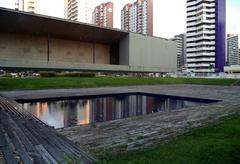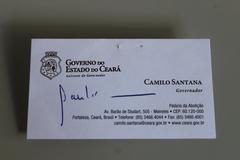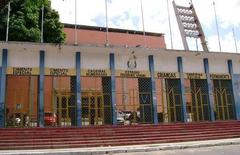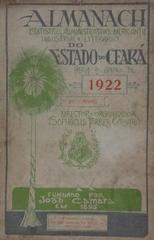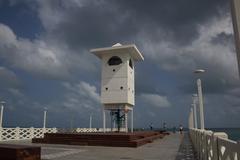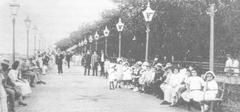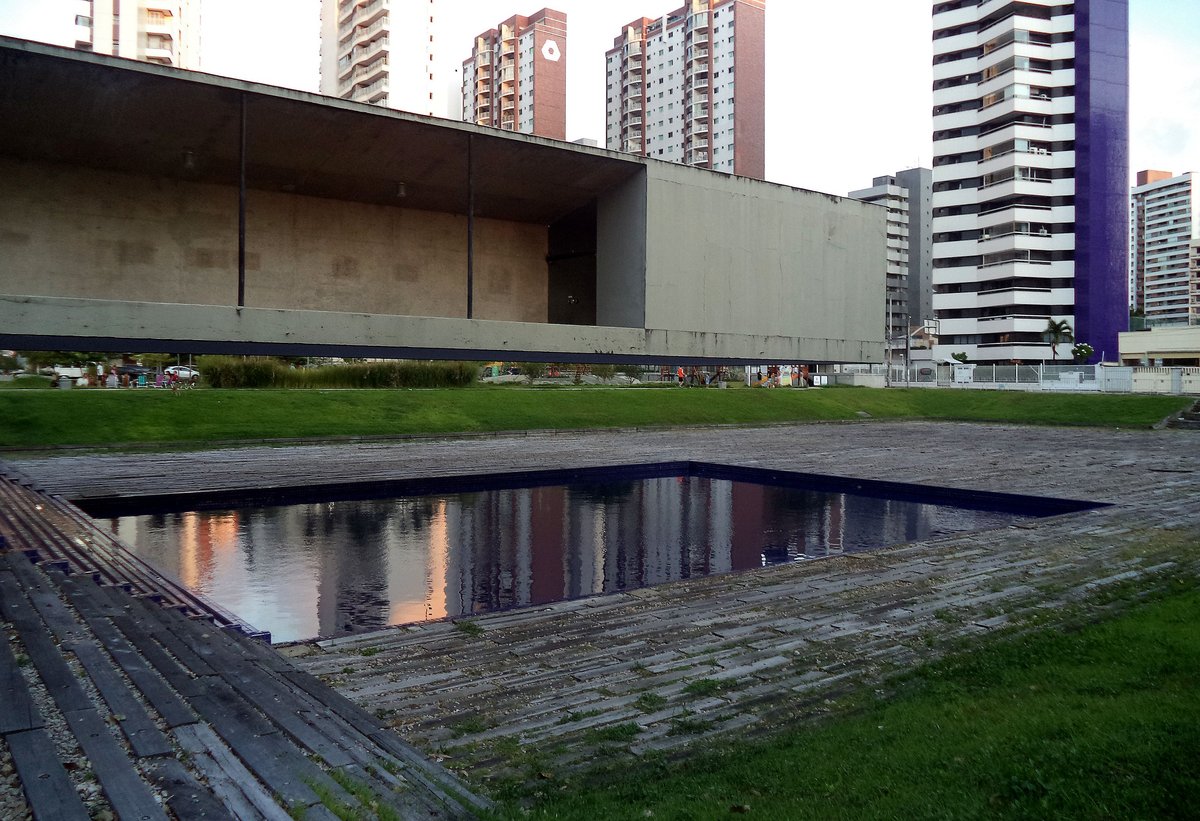
Conjunto Palácio da Abolição e Mausoléu Castelo Branco: Visitor Guide, Hours, and Tickets – Fortaleza, Brazil
Date: 14/06/2025
Introduction
The Conjunto Palácio da Abolição e Mausoléu Castelo Branco is a cornerstone of Fortaleza’s historical, cultural, and architectural landscape. Situated in the vibrant Meireles district, this modernist complex symbolizes Ceará’s pivotal role in the abolition of slavery and offers a nuanced reflection on Brazil’s political evolution. Designed by the acclaimed architect Sérgio Bernardes and inaugurated in 1970, the complex merges innovative architecture with historical depth, making it a must-visit for travelers, architecture enthusiasts, and anyone interested in Brazilian history.
This comprehensive guide covers the site’s origins, architectural features, political and cultural significance, visitor information, accessibility, guided tours, and tips for an enriching experience. For the latest details, visitors should consult official resources such as the Casa Civil CE and Governo do Ceará.
Historical and Cultural Significance
Abolitionist Heritage
The Palácio da Abolição’s name honors the abolition of slavery, harkening back to 1884 when Ceará led the nation by abolishing slavery four years before the national Lei Áurea. The site thus stands as a symbol of social progress and the courage of local abolitionist movements. Nearby, the Mausoléu Castelo Branco adds a complex political layer, memorializing Brazil’s first president under the military dictatorship—Humberto de Alencar Castelo Branco—while serving as a space for critical reflection on democracy, human rights, and collective memory (TVT News).
Political Evolution
Initially the official residence and workplace of Ceará’s governors, the complex has evolved to host cultural events, art exhibitions, and educational programs. The Mausoléu and the palace complex now play a role in public memory by confronting Brazil’s dictatorship-era history and fostering dialogue around truth, justice, and inclusion. Collaborative projects with marginalized groups—including indigenous and LGBTQ+ communities—underscore the commitment to inclusive historical narratives (TVT News).
Architectural Highlights
Modernist Design
Sérgio Bernardes’ modernist approach is evident in the modular structure, steel frameworks inspired by local flora, expansive terraces, and seamless integration with the landscape. The palace complex features:
- Palácio da Abolição (Main Building): Maximizes natural light and sea breezes, with panoramic views of Meireles Beach.
- Gabinete de Despacho (Office Annex): Blends private and public functions via covered walkways.
- Chapel: A tranquil, spiritual space.
- Mausoléu Castelo Branco: A dramatic cantilevered concrete prism over a reflecting pool, designed to evoke permanence and reflection.
The landscaping, initially inspired by Roberto Burle Marx and executed by Fernando Chacel, uses native species and water features to create a harmonious environment (ipatrimônio).
Restoration and Contemporary Use
Restorations in the early 2000s, led by the Departamento de Arquitetura e Engenharia do Estado do Ceará, preserved the building’s original features while adapting it for modern cultural and governmental functions. A 215-seat auditorium was added, and accessibility upgrades were implemented. Since its 2011 reinauguration, the site functions as both the seat of state government and a cultural center, hosting exhibitions, lectures, workshops, and events (ArchDaily).
Visitor Information
Visiting Hours
- Palácio da Abolição Complex: Monday to Friday, 8:00 AM – 5:00 PM.
- Mausoléu Castelo Branco: Open daily, 8:00 AM – 7:00 PM.
- Cultural Events and Exhibitions: Check the Casa Civil CE website for up-to-date schedules.
- Public Holidays: Closed.
Admission & Tickets
- Entry: Free for all visitors.
- Guided Tours: Free, but advance booking is required. Reserve by phone (+55 85 3466-4981); online booking will be available soon (Casa Civil CE).
Tour Structure
- Duration: 30–40 minutes.
- Daily Tour Times: 8:30–9:30 AM, 10:30–11:30 AM, 2:00–3:00 PM, 4:00–5:00 PM.
- Languages: Primarily in Portuguese; inquire about translation support when booking.
- Photography: Not permitted during guided tours to ensure security and preservation.
Accessibility
- Physical Access: Ramps, elevators, and adapted restrooms are available.
- Assistance: Notify the administration of any special accessibility needs when booking.
Site Policies
- Dress Code: No strict code; modest attire recommended, especially in the chapel.
- Security: Screening and photo ID may be required.
- Group Size: Limited to ensure quality and safety.
Address and Directions
- Address: Av. Barão de Studart, 505, Meireles, Fortaleza, CE.
- Visitor Entrance: Rua Silva Paulet, 400 (Map and Directions).
- Public Transport: Multiple bus lines serve the area; taxis and rideshares are widely available.
- Parking: Limited on-site parking; nearby street parking available.
What to See and Do
- Mausoléu Castelo Branco: Explore the striking modernist memorial and its reflective pool.
- Palácio da Abolição: Walk through the restored main building, view art exhibitions, and experience the vibrant public gallery.
- Gardens and Chapel: Enjoy tranquil landscaping and peaceful green spaces.
- Galeria de Arte: View works by Ceará’s renowned artists.
- Events and Programs: Attend lectures, concerts, workshops, and cultural festivals scheduled throughout the year.
Nearby Attractions
- Dragão do Mar Center of Art and Culture: Hub for contemporary art, music, and theater.
- Praia de Meireles: Popular beach with restaurants, cafes, and shops.
- Palácio da Luz and Fortaleza Cathedral: Historical landmarks within a short distance.
Practical Tips
- Arrive at least 15 minutes early for check-in and security.
- Bring sun protection and water; Fortaleza’s climate is warm and humid.
- Inform staff of any accessibility needs before your visit.
- For up-to-date information on events and tours, contact +55 85 3466-4981 or check the official website.
Frequently Asked Questions (FAQs)
Q: Are tickets required?
A: No, both admission and guided tours are free, but tours require advance booking.
Q: Is the site accessible to wheelchair users?
A: Yes, with ramps and adapted restrooms.
Q: Can I take photos?
A: Photography is not allowed during guided tours.
Q: Are tours available in other languages?
A: Tours are mainly in Portuguese; inquire about translation when booking.
Q: What is the best time to visit?
A: Weekday mornings offer fewer crowds and pleasant weather.
Visual Gallery
Summary and Recommendations
The Conjunto Palácio da Abolição e Mausoléu Castelo Branco embodies Fortaleza’s layered history, architectural innovation, and contemporary commitment to inclusive memory and cultural engagement. With free entry, accessible facilities, and a rich program of tours and events, the site is essential for anyone seeking to understand Ceará’s role in Brazilian history. Combine your visit with nearby attractions for a full cultural day in Fortaleza. For the latest updates, consult official resources and plan ahead for a rewarding experience.
Sources and Further Reading
- Palácio da Abolição and Castelo Branco Mausoleum in Fortaleza: Visiting Hours, Tickets, and Historical Insights, 2023
- Visiting Conjunto Palácio da Abolição: History, Tickets, and Things to Do in Fortaleza, 2023
- Palácio da Abolição Visiting Hours, Tickets, and Cultural Attractions in Fortaleza, 2023
- Conjunto Palácio da Abolição Visiting Hours, Tickets & Tour Guide | Fortaleza Historical Sites, 2023
